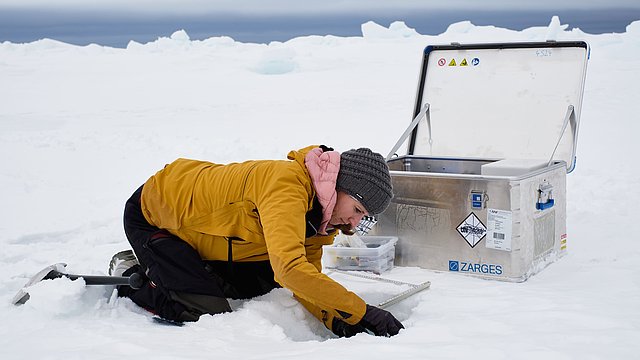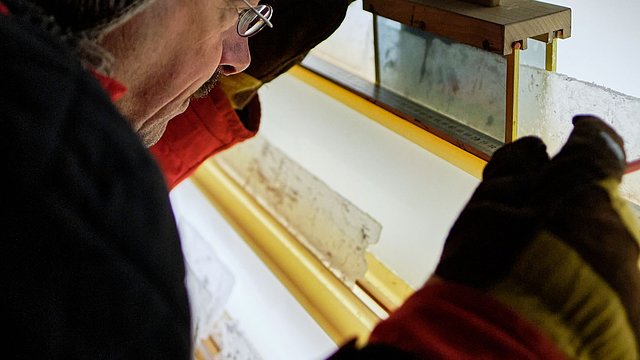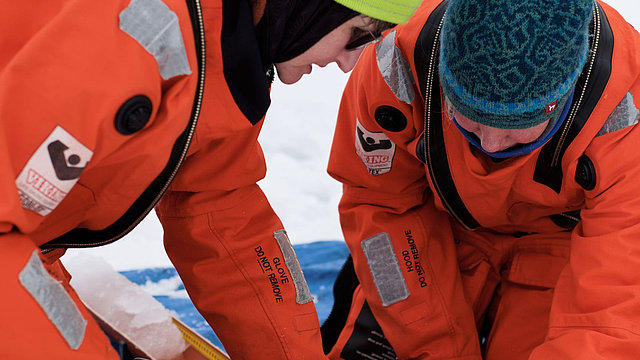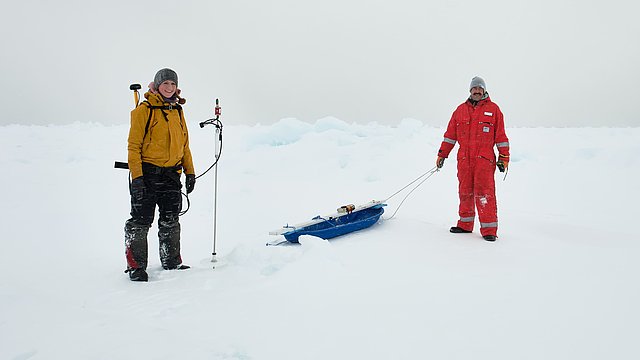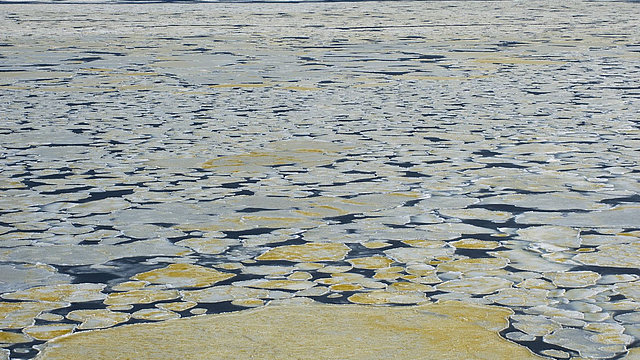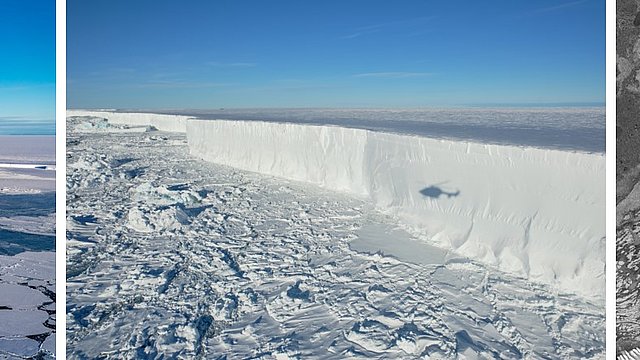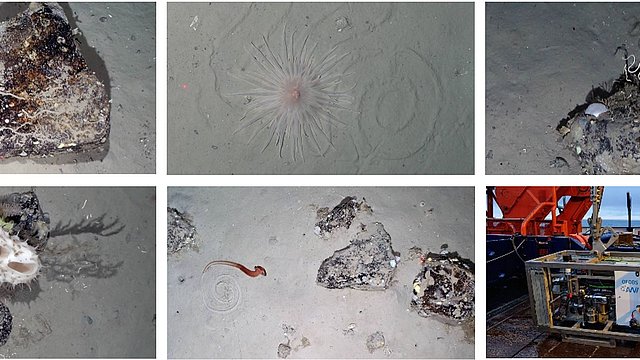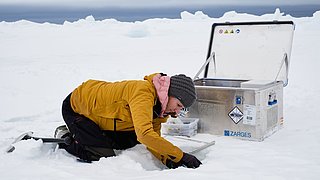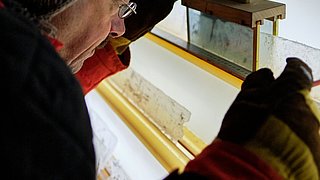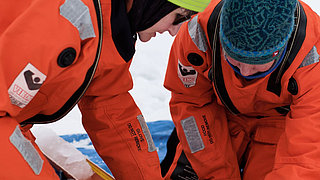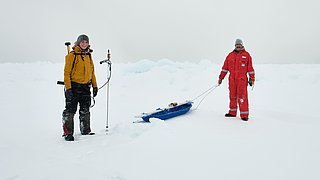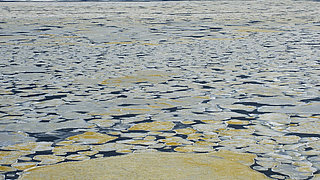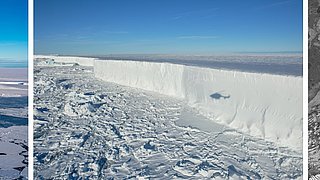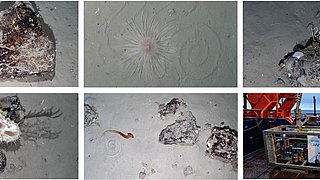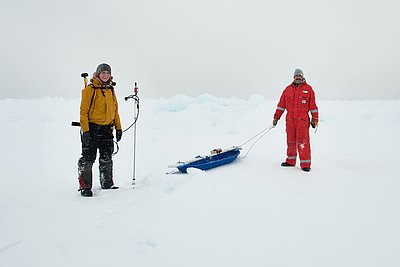While the Arctic sea ice continues to decline, a glance at the Southern Ocean reveals a different picture: in recent years and decades, the sea-ice extent has increased slightly – albeit with clearly recognisable interannual fluctuations and significant regional differences. Nevertheless, we can expect this situation to change, even in the ice-covered Southern Ocean, and it is likely that in the future we will be reporting on a decline in the Antarctic sea ice. Before then, it is therefore all the more important to understand what the actual situation is before the change – and whether there have already been small changes in the sea-ice system compared to 20 or 30 years ago.
With this aim in mind, at the beginning of the year we embarked on the 124th Polarstern expedition (PS124). An expedition that couldn’t have been more exciting – before we even entered polar waters. Due to the continuing COVID-19 pandemic, on 16 January the entire scientific team, together with the ship’s crew, first had to go into a two-week quarantine at a hotel in Bremerhaven’s fishery harbour district. Also there: the crew of the Lufthansa plane that would take us to the Falkland Islands in early February – on the airline’s longest passenger flight to date. Once everyone at the hotel had had three negative coronavirus tests, we were able to take off from Hamburg on the evening of 31 January 2021 – and less than 16 hours later, through the window we could catch sight of our German research icebreaker, Polarstern, off the coast of the Falklands.
On board, everything went very quickly: securing containers, setting up laboratories, making everything seaworthy – then we weighed anchor; and at 5 pm local time on 3 February our expedition to the Antarctic began. The ‘Roaring Forties’ and ‘Furious Fifties’ lived up to their names, and greeted us accordingly. Just two days later, the conditions became a bit calmer, and we glimpsed the first icebergs on the horizon and the first sea-ice remnants crossed our path. And so the work on the ship work soon began, not just for the oceanographers and marine biologists – but also for us sea-ice physicists and sea-ice biologists on board.
Due to the abnormally low ice cover in the eastern Weddell Sea this summer (minimum reached in February 2021), for our sea-ice work we sometimes had to accept long helicopter flights in order to find floes that were able to bear the weigh of our equipment. On 10 February, for the fist time we were once again able to step onto an Antarctic ice floe and start our work. We first investigated the characteristics of the snow cover – the layer that separates the sea ice from the atmosphere. To do so, we analysed the various sub-layers, which resemble tree rings, to determine what the snow had been through in the past year (Photo 1). Here the focus was on the crystal size and structure (Photo 2). The additional investigation of the snow density revealed just how compact the snow was. This is an important parameter in gaining a better understanding of the interactions between the sea ice and atmosphere. At first glance, however, we were barely able to detect any differences between these measurements and those from previous years – a good sign for the sea ice!
We also performed similar analyses on the sea ice. Here we gathered several ice cores at the individual ice stations and took them back to the ship. In the ice laboratory we then sawed open one of the cores and studied the structure of the ice crystals (Photo 3). “Using these ice samples, we can, for example, reconstruct how the ice grew, and as a result we can draw conclusions about where the ice floes we sampled were formed. If, for instance, we find large amounts of granular ice in the lower portion of the core sample, this indicates that the floe likely formed under extremely turbulent conditions, such as in a polynya. If, on the other hand, we see columnar ice, we can assume that the ice formed in quieter waters, through completely ‘normal’ thermodynamic growth,” explains Stefanie Arndt, a sea-ice physicist at the AWI. On board, the other ice cores were melted and filtered for various biological analyses. In our laboratories at the Institute, the first follow-up analyses are currently being performed – and we’re eager to see the results.
But, of course, we weren’t just interested in the structure of the sea ice and snow, but also in their thickness. Accordingly, at the end of each ice station we walked across the floe with our ice-thickness measuring sledge (using an electromagnetic measuring technique) and a snow-thickness probe to measure these parameters (Photo 4). The data gathered over all of the ice floes showed an average ice thickness of 1.86 m, which means that it was, just like the average snow thickness of 24 cm, comparable with the findings from previous expeditions to a similar region.
Once all the probes had been safely packed and all the data had been collected, the helicopter picked us up and we continued our work on board in the ice and filtration laboratory. In addition, on this expedition we deployed our ice-thickness probe, the so-called EM-Bird, which was towed underneath the helicopter, in order to measure the ice thickness over a larger radius, again using an electromagnetic technique. Since most of the time the RV Polarstern was at the ice edge or even in open water, we weren’t able to fly in nice triangles, as usual, and instead had to actively engage in ‘ice-floe hopping’ with the helicopter; a challenging task for the pilots, too. In the end, we completed six successful flights, which showed us: over a large radius, the thickness of the sea ice had hardly changed – which meant that we found ourselves in an ice-covered Southern Ocean that was still in a stable condition.
On our journey further southwards, however, we didn’t encounter white sea ice as expected, but instead frequently passed bands of yellowish ice slush, or pancake ice that was predominantly characterised b y this yellowish-green colour (Photo 5). It may not have been particularly pretty to look at, but for the biologists among us, it was all the more exciting. On board, the first microscope investigations of this so-called ‘super bloom’ revealed increased phytoplankton on the upper side of the pancake ice samples and ice algae on the underside – as such, here, too, we can’t wait to see what the follow-up lab analyses will reveal.
While we were conducting our research on the ocean and sea ice on board the RV Polarstern, a fascinating event occurred not too far away: on 26 February 2021, a giant iceberg, with an area of 1,270 square kilometres, calved from the Brunt Ice Shelf (Photo 6). Needless to say, we wanted to take a closer look at the iceberg, or rather at the ocean floor, which was now accessible and no longer covered by an ice shelf. The biologists, oceanographers and geologists were immediately all for it – so once we had finished our research, we made a small detour. The pictures were fascinating – also above the waterline. In some parts the shelf ice had broken away cleanly, and a few metres further along, the ice was fractured and jagged. We all asked ourselves just how loud it must have been when the iceberg calved. Even with our equipment, we were unable to answer this question. We were only able to provide some insights into life on the seabed. Here recordings by our onboard video sledge showed the astonishing biodiversity found there (Photo 7). Anemones, ophiuroids and small fish species were all present – impressive diversity, despite the hostile environment. We also collected sediment and water samples, which will provide detailed information on the ecosystem and offer us insights into the nutrient content and water flow at the ice-shelf edge.
Following this excursion, there was just one stop left: our overwintering station, Neumayer Station III. Here the ‘old’ overwintering team and the summer crew were waiting for us to pick them up – since the usual journey home by air wasn’t possible, due to the pandemic. We sea-ice physicists and sea-ice biologists couldn’t pass up the chance to take measurements and probes in Atka Bay one last time. The ice here differs fundamentally from the sea-ice samples previously collected in the Weddell Sea – the ice in Atka Bay is firmly connected to the surrounding ice shelf; it’s what we refer to as fast ice. Our measurements are an optimal supplement to our year-round time series on the ice, which the overwintering team has attended to for over eleven years.
Once all the passengers, freight, data and samples were on board, our journey slowly but surely neared its end – and we headed for our final destination, Port Stanley on the Falkland Islands. Here the Polarstern’s crew was exchanged, and while the new crew safely manoeuvred the ship back to Bremerhaven, Lufthansa once again took us on board and flew us back to Germany. The 124th Polarstern expedition then ended in early April, and we can look back on an exciting experience. “But also on an expedition with unusually bad weather, several storms and, unfortunately for us, not very much ice. Nevertheless, we can’t complain about all we brought back with us from the 18 ice stations – and can’t wait to see what the subsequent laboratory analyses will tell us about the stations where we collected our samples,” Stefanie Arndt sums up in her report.
Contact
Questions?
Contact us via E-Mail or our contact form.
Graphics
